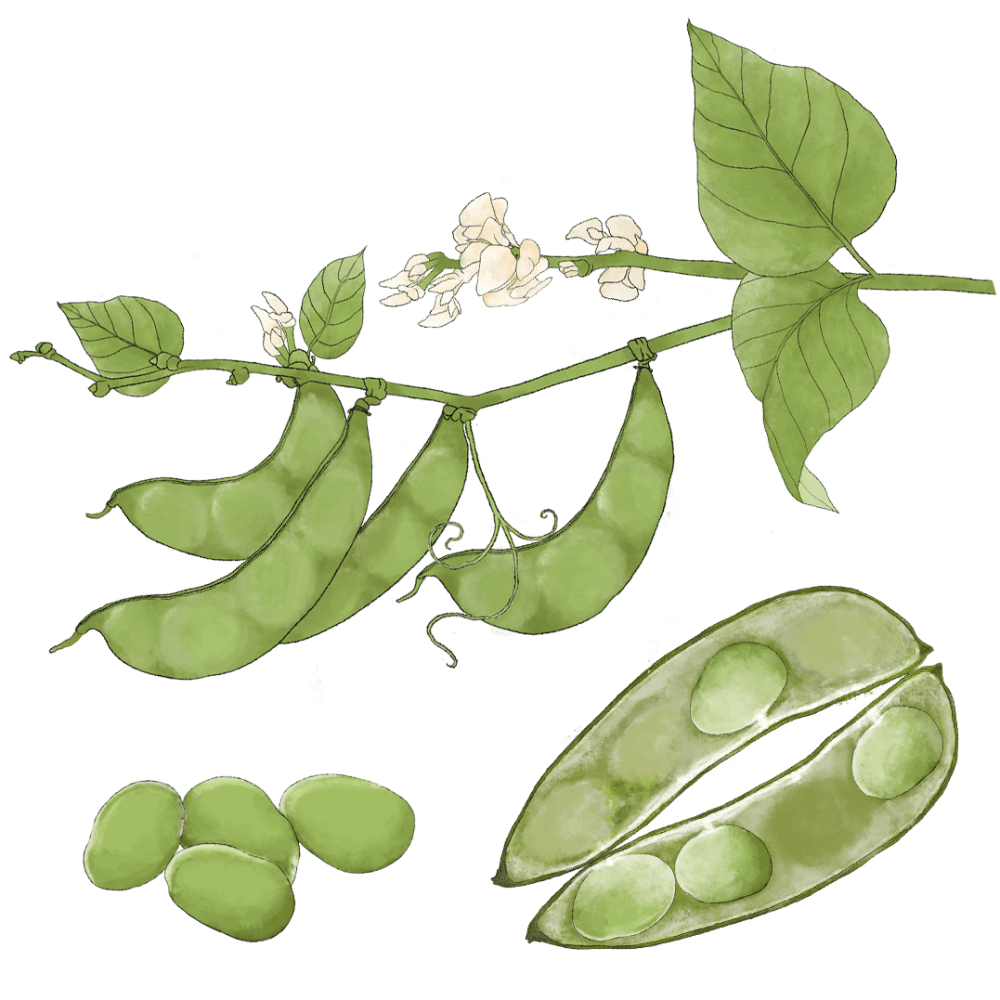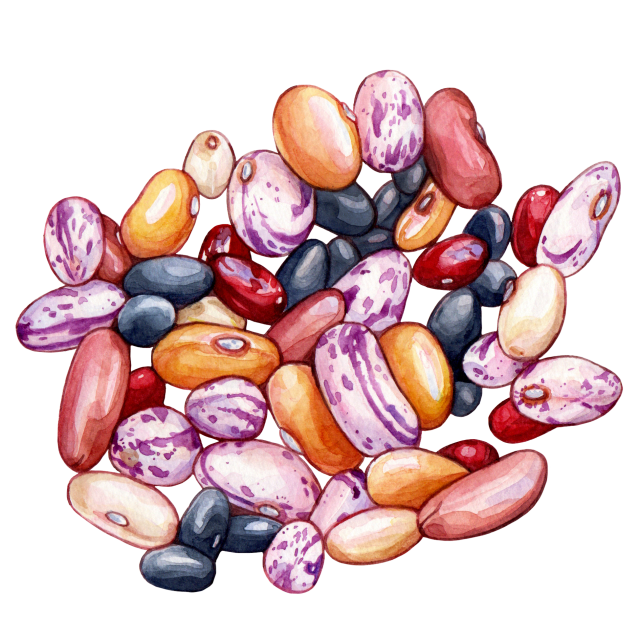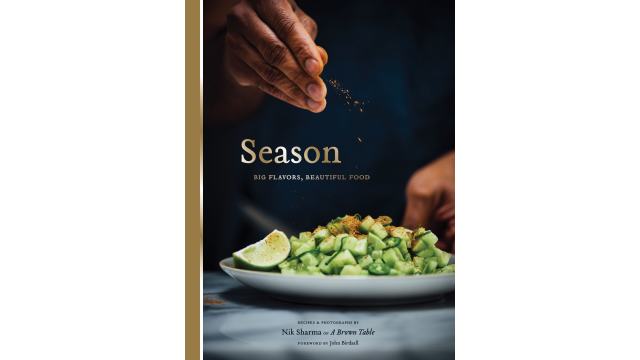Hyacinth Bean

Latin name: Lablab purpureus
Other names: avarekai, val, surti papdi, Egyptian kidney bean, seim bean, Tonga bean
Uses: vegetable, medicine, pulse, fodder
The arrival of hyacinth beans in tropical markets is heralded by a rich, sharp scent emanating from the heaps of gently curved flat green pods. In Karnataka, in south India, the Kannada word sogadu is used with relish to describe the astringent, vegetal smell. The pods, each containing four to seven seeds, are about five centimeters long and grow on prolific vines, which flutter with gorgeous mauve flowers. The fresh bean pods are slightly oily to the touch, with a smooth green, purple, or purple-veined peel.
Why is hyacinth bean healthy?
Hyacinth beans are full of iron, meeting more than half your daily needs per serving. The beans are also rich in magnesium and zinc, essential for healthy hair and overall immune and metabolic health. Mature seeds or legumes are cooked as lentils and are nutrient-dense sources of plant protein and energy.
What does hyacinth bean taste like?
While tender pods have a mild flavor, the mature ones are fibrous, bitter, and somewhat poisonous (mostly dark-seeded types) as they contain toxic cyanogenic glycosides. When cooked properly, the toxins are neutralized, and the mature beans taste nutty, buttery, and mildly sweet.
Where does hyacinth bean grow?
Hyacinth beans, including a striking purple variant, grow all over the tropics. India is a major producer, with crops located mostly in the western and southern states. Hyacinth beans are also found in tropical Africa, South and Central America, Southeast Asia, and Australia.
How do I prepare hyacinth bean and what do I pair it with?
Only tender young hyacinth pods are eaten whole (after stringing them). The dry, mature beans are eaten as a pulse in parts of Africa, but must be carefully cooked, with several changes of water. The flowers are edible, as are the leaves, when cooked. The beans can also be fermented and used to make tofu or tempeh.
Chè đậu ván is a sweet hyacinth bean soup from Vietnam; savory variations are also found in Malaysia and China (where mature beans are also used in traditional medicine). In Kenya, the beans are used in a hearty stew as well as mashed with boiled green bananas. In India, the beans are soaked overnight to remove the seed coat, and cooked in a simple stir-fry with cumin, fresh green chiles, and coconut. The buttery kernels also pair well with strong masalas that include onion, garlic, and ginger, or in spicy, coconut-based curries or sambars.
Surprising fact:
Once an important crop in precolonial central Kenya, hyacinth beans — called njahi — lent their name to geographical features and even the rainy season, Mibura Ya Njahi, during which the beans were harvested.






